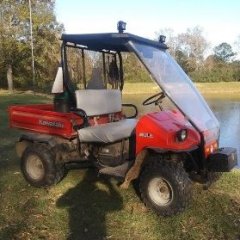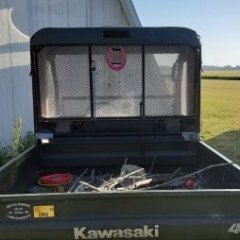Leaderboard
Popular Content
Showing content with the highest reputation on 12/13/2020 in all areas
-
I am lookin for recommendations. I would like to put a winch on my 2019 Honda Pioneer 1000-5. I have been looking at the Warn Axon 55s but would entertain any feedback from people regarding this or other winches.2 points
-
As you probably have now realized, if it says HISUN on it, you got hosed.. Even the rep at Massimo Motors told me they dropped HISUN engines last year because of so much problems and they wont even warrenty the ones they sold.. HISUN wont even talk to me... We are all just left holding the bag.. My Massimo with HISUN engine has spent 6 months of its first year in the shop on 6 visits... Parts are hard to get and warranty is non existent .. Most shops refuse to even work on them now.. They dont get paid ..2 points
-
1 point
-
1 point
-
some of those briggs V-twin engines have a diode in the kill wires that can go bad and cause that. it can even be insulation wore off on the kill wire going back to the coil and grounding the coil and killing spark, like when you turn the key.1 point
-
OH YA!! They're proud of those tires. I got a new set of 4 for the price of 1. They were new from Bestusedtires.com. More aggressive like an ag tractor tread. Hoping it will be better in snow, 3010s dont do well in snow.1 point
-
Hello again. I jumped into 3 problems I have seen in the past. Mice love the filter material....a sitting machine is a welcome mat. A clogged filter or nest in the intake is the same as a B&S engine turned over and the air filter flooded with engine oil...cannot draw enough air and results in a "choked" carb condition. Remove the throttle body intake boot (the rubber collar going to the air box) and avoid getting dirt into the intake. This removes all air flow restrictions. The reason for a new spark plug is trouble shooting/testing....need a clean plug for the test run. IF it runs OK with the boot removed, problem is in the intake circuit. The old fouled plug won't run right and negate any testing done. The run time is just long enough to see if it works.....BUT not too long as to load it up like the old plug. STILL NO WORK....next line below. COMPRESSION and SPARK. Pull plug and put finger over the spark plug threaded head hole....attempt to hold in any pressure....WOT (gas pedal to floor) and unrestricted intake air (takes air to make AIR), CRANK OVER ENGINE....IF finger blows off with a POP (note might BURN if you seal it too tightly because of the air burst JET) you have enough compression. Cheap and dirty compression test without tester. IF GOOD, skip next section below. NOTE: low compression and/or a weak spark will mimic a RICH fuel mixture....sooty black plug. REASON....fuel is not burned completely by misfires....builds up on plug insulator (wet plug) and then foul. LOW COMPRESSION.......diesel engines fire (without spark) on HIGH compression of fuel/air mix. Gas engines only require say 120 PSI compression of the fuel air mix. Low compression causes: timing chain jumped (valve timing off), valve adjustment too tight, burnt exhaust valve/seat, rings work or stuck in piston grooves. SPARK....spin engine over and hold sparkplug to any metal on engine. Should have nice fat hot spark and not a wispy wimp. Slowly lift the spark plug thread body away from the engine....should jump a good 1/4 inch gap and then try to find a better path to gnd....that being YOU. Follow safe methods. NOW an easy check of the timing of the spark. Finger over hole as before but LIGHTLY, no throttle required this time, crank engine and observe spark.......should fire on every rotation of the engine (waste spark system) which will be twice (exhaust and compression strokes). You are looking for a spark timed to the compression POP/spit on your finger. IF a question of timing...use a timing light BUT you have to remove a cover on pass side of engine to get to crank rotating member. I have used a timing light looking thru an INTAKE valve cover lid but this can be confusing because you will see two (2) flashed images....cam runs at half speed so you will see valve closed (COMPRESSION) and a slight blur/shift from overlap where the intake valve starts to open at the EXHAUST to INTAKE stroke time (the wasted spark). You had one good suggestion about go juice (starting fluid). Find fuel tank under pass seat.....round "plug/cover" for fuel pump. Note the 4 wire connector which is the fuel pump supply +12Vdc and Gnd and the fuel level sending unit. Remove clip and disconnect the 4 wires.....now no fuel pump to 40 PSI...no fuel at the injector after initial residual pressure drop...no chance to foul NEW plug now. Crank over engine and it might sputter from residual fuel pressure then just plain crank and no run. Feed the go juice in spurts......to filter (intake duct tube all connected---air box lid OFF). REASON: If INTAKE valve is OPEN slightly say due to being adjusted too tight or jumped cam timing, you will get a flash fire back thru throttle body...Risky shooting directly into the throttle body. DOES the engine run of the burst? and then die after it sucks go juice out of filter. Try several times and note engine runability. Crank again and give another shot burst to get running....NOW, you give bursts to keep it running after trailing off and note engine run quality. IF you can simulate a CARB system (remember the injectors and shooting blanks and the throttle body is now just a carb butterfly valve and YOU are the fuel metering jets and passages), your problem is the fuel metering by the Delphi ECM. The DELPHI ECM module can fail....seen only one bad on B&S large engine (wounded but NOT dead that did screw up fuel delivery) but very rare......most fueling problems are due to the multiple inputs to the module. some were caused by other repair shops sloppy work, wiring harness problems, mice love wire insulation, O2 sensor failure, and so on. Digest these LOW tech (no scope or meters req'd) testing ideas and get back.....BEN P.S. Old is only a state of mind....just don't do stupid stuff because your body doesn't heal as easily. Give you a hint---loser on first draft lottery....do the math.1 point
-
Couple of things here. First, the valve covers on my car are in the 7ft. lbs. range. Very similar. You said that you tightened it as tight as you could with a ratchet. 7ft. lbs. would be about as tight as you could do with a nut driver. So a quarter in. ratchet would still be medium tight. Second, don't ever use pliers of any sort on anything that's stripped. Vise grips will work best. In this type of situation, go for the win on the first try, because sometimes there's not a second chance. If the pliers slip, they'll just make the job tougher. Since it all worked out, no harm done, and good job! Now, on to the flywheel, and keeping things from spinning. A simple trick from back in the day could help here. Try feeding a rope through the spark plug hole. Fill the cylinder up with rope, and leave it in place. Obviously you'll want to leave enough rope hanging out, so it can be removed afterwards. This will GENTLY bind the piston, so it can't cycle. Use a good rope , that won't leave tiny rope bits. And try to coil it into the cylinder as it goes in. It's been a long journey buddy, and now you're getting close to the end. Don't forget why you came this way, instead of taking the easy way, and just paying the money. The things you've learned here will serve you well, throughout your whole life. Really...its a small price to pay for that kind of education. Keep those pictures coming!1 point
This leaderboard is set to New York/GMT-04:00








